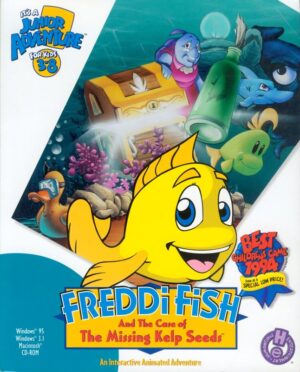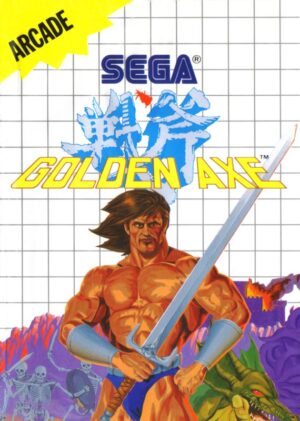Retro Replay Review
Gameplay
Ennichi no Tatsujin offers a lively assortment of minigames that capture the essence of traditional Japanese festival entertainment. Players move between balloon art, crepe-making, darts, fortune telling and more, each presented with simple yet responsive motion controls. The game leverages both the Wii Remote and Nunchuk to replicate real-world actions, from twisting balloons in time with the beat to carefully scooping goldfish with a virtual net.
(HEY YOU!! We hope you enjoy! We try not to run ads. So basically, this is a very expensive hobby running this site. Please consider joining us for updates, forums, and more. Network w/ us to make some cash or friends while retro gaming, and you can win some free retro games for posting. Okay, carry on 👍)
The variety of events ensures the gameplay remains fresh, as each activity demands slightly different skills and timing. In the Takoyaki stand, for example, you must flip balls of batter precisely to achieve a golden crust, while in Yo Yo Tsuri you slowly guide a paper string under water to hook floating balloons. These differences keep players engaged and learning new techniques rather than repeating identical motions.
Progression is tied to a points system where performing well in each minigame unlocks additional attractions, culminating in the opening of a haunted house. This simple meta-game encourages repeated playthroughs of individual events to hone reflexes and maximize scores. While veterans of motion-controlled titles may find some challenges modest, newcomers will appreciate the gradual ramping of difficulty.
Multiplayer options let up to four players compete directly in select events, fostering a party-game atmosphere that shines in group settings. Creative use of the Wii hardware means that friends can gather around and cheer each other on, or vie for the top spot in ring toss and bottle shooting. Despite the absence of online play, local competition remains a highlight.
However, the limitations of each minigame’s depth become evident over extended sessions. Some events, like the fortune teller’s Inoi no Kan, serve more as whimsical interludes than full-fledged challenges, offering little replay value beyond the novelty of dramatic prompts and crystal-ball metaphors. Still, the core collection is robust enough to provide hours of lighthearted fun.
Graphics
Visually, Ennichi no Tatsujin adopts a vibrant, cartoony art style that evokes the festive atmosphere of Japanese street fairs. Bright colors dominate every stall and game arena, with stylized decorations that bring each minigame to life. The character models—both players and NPC festival-goers—are rendered in a cheerful, slightly exaggerated design that suits the game’s light-hearted tone.
Animation quality varies by event, but generally remains smooth and fluid. The balloon twisting activity features rhythmic visual cues that pulse with the soundtrack, providing clear feedback when your gestures align with the beat. In contrast, goldfish dunking uses subtler water ripples and net-movement effects, offering a more delicate sense of motion control accuracy.
While the Wii’s hardware places some limits on texture resolution, Ennichi no Tatsujin cleverly uses solid shading and bold outlines to maintain clarity on screen. Each game interface is clean and clutter-free, ensuring players focus on the action rather than deciphering background details. Subtle weather effects—like fluttering banners and drifting confetti—add a layer of polish without overtaxing the system.
The ghost house unlock sequence introduces darker lighting and eerie coloration to set it apart from the rest of the minigames. Though not a true 3D horror experience, its cartoon-spooky visuals provide a satisfying reward for dedicated players. This contrast enhances the sense of achievement in unlocking the final attraction and reinforces the festival-to-haunted-house progression.
Overall, the graphics strike a balance between simplicity and charm, perfectly catering to families and casual players. While not a showcase of next-gen fidelity, the presentation effectively conveys the fun and energy of Japanese festival culture in a format that is easy on the eyes.
Story
Ennichi no Tatsujin does not follow a traditional narrative structure, but it threads a loose festival storyline through its minigame progression. You begin as a newcomer helping at festival stalls, gradually mastering each activity to draw bigger crowds and unlock new attractions. This light framework gives players a sense of purpose beyond merely ticking off minigames.
The backdrop of a vibrant summer festival serves as the unifying theme, with festival-goers offering enthusiastic support as you work booth after booth. Characters are scantily sketched—mostly caricatures cheering you on or placing orders—but they establish a warm, communal atmosphere. Between games, brief interludes of crowd chatter and vendor dialogue keep the pace lively.
The eventual revelation of the ghost house as a secret attraction adds a playful twist to the minimal plot. Once you’ve accumulated enough points, the festival transforms at dusk into a ghostly venue. This tonal shift, though brief, rewards dedicated players with a sense of accomplishment and novelty before the credits roll.
Despite its sparse narrative ambitions, the game’s story elements support its arcade-style design. There’s no deep character development or dramatic arcs, but the festival setting and simple progression offer enough context to keep players invested. Fans of narrative-heavy titles may find the story wanting, but those seeking pick-up-and-play diversity will appreciate the festival framing.
Ultimately, Ennichi no Tatsujin’s “story” is more of a colorful backdrop than a driving force. It provides enough cohesion to justify the shift between disparate minigames, yet never overshadows the core focus on interactive fun.
Overall Experience
Ennichi no Tatsujin stands out as a fiendishly accessible demonstration of Wii motion controls wrapped in a festive package. Its diverse minigame roster ensures that every player—whether young children, families or casual adults—can find at least a few activities that resonate. The pick-up-and-play nature means there’s little barrier to entry; you simply grab the Wiimote (and Nunchuk for select events) and dive right in.
The home-party angle shines brightest when sharing the experience with friends. Laughter and lighthearted competition infuse multiplayer sessions, turning simple tasks like ring-tossing or balloon sculpting into memorable group events. While lacking online matchmaking, the game more than compensates with inviting local multiplayer fun that appeals to non-gamer guests.
On the flip side, Ennichi no Tatsujin’s appeal may wane after repeated playthroughs, as deeper minigame mechanics are limited and the novelty of each activity eventually fades. Players seeking extensive single-player longevity or complex challenges could find the content a bit thin. Nevertheless, the promise of unlocking the ghost house offers a final carrot to chase, extending replay value for dedicated festival masters.
Sound design and music further bolster the overall experience, with upbeat traditional tunes that enhance the festival ambiance. Effects such as crowd cheers, sizzling crepe pans and dart thuds create an engaging audio backdrop that underscores each minigame’s unique identity.
In sum, Ennichi no Tatsujin excels as a casual, family-friendly title that showcases the Wii’s motion control strengths. Though not a deep or sprawling adventure, its charming visual presentation, straightforward controls and lively multiplayer make it a worthwhile addition to any Wii library, especially for those hosting game nights or looking to explore Japanese festival culture through interactive play.
 Retro Replay Retro Replay gaming reviews, news, emulation, geek stuff and more!
Retro Replay Retro Replay gaming reviews, news, emulation, geek stuff and more!




Reviews
There are no reviews yet.